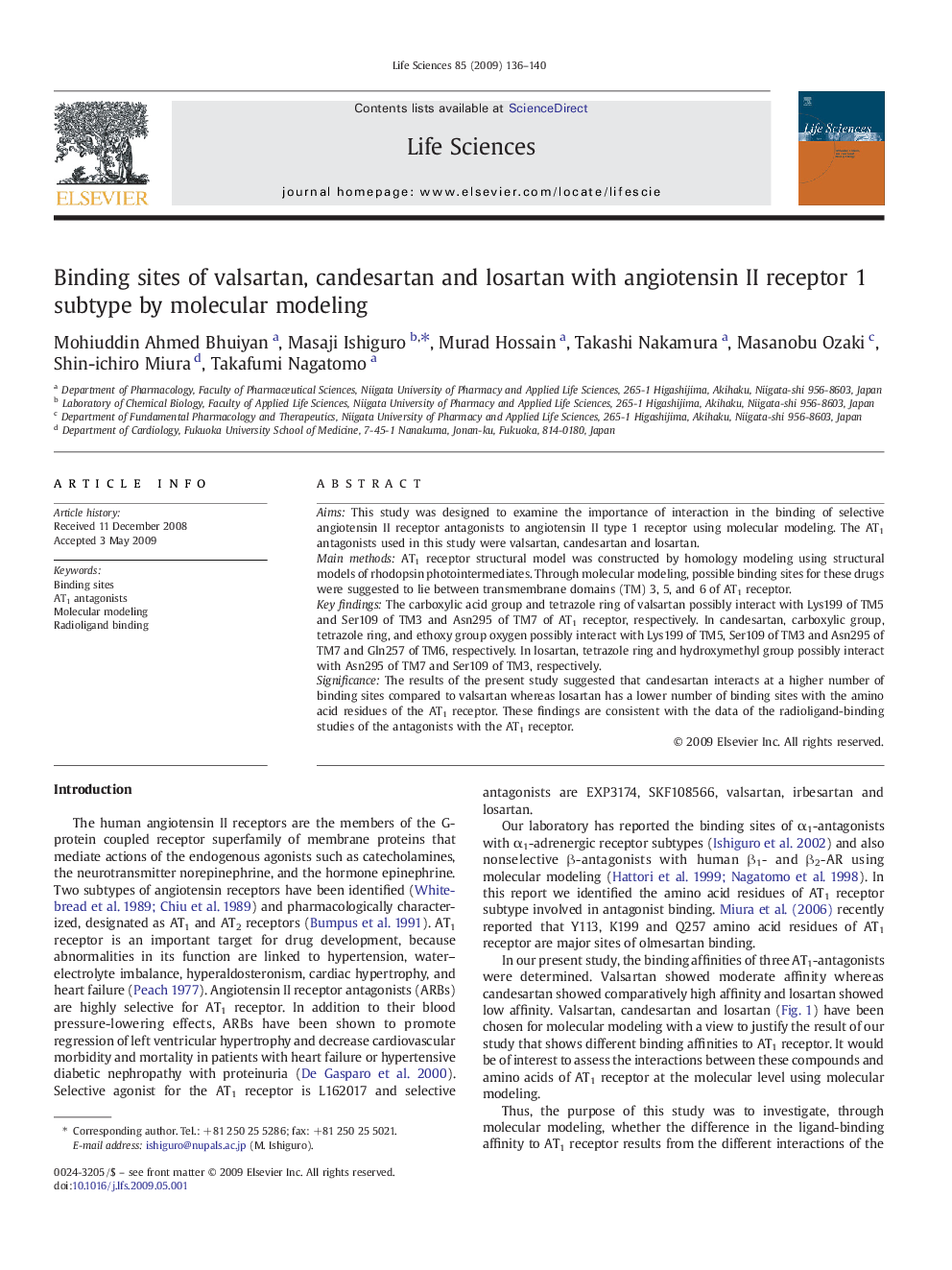| Article ID | Journal | Published Year | Pages | File Type |
|---|---|---|---|---|
| 2552746 | Life Sciences | 2009 | 5 Pages |
AimsThis study was designed to examine the importance of interaction in the binding of selective angiotensin II receptor antagonists to angiotensin II type 1 receptor using molecular modeling. The AT1 antagonists used in this study were valsartan, candesartan and losartan.Main methodsAT1 receptor structural model was constructed by homology modeling using structural models of rhodopsin photointermediates. Through molecular modeling, possible binding sites for these drugs were suggested to lie between transmembrane domains (TM) 3, 5, and 6 of AT1 receptor.Key findingsThe carboxylic acid group and tetrazole ring of valsartan possibly interact with Lys199 of TM5 and Ser109 of TM3 and Asn295 of TM7 of AT1 receptor, respectively. In candesartan, carboxylic group, tetrazole ring, and ethoxy group oxygen possibly interact with Lys199 of TM5, Ser109 of TM3 and Asn295 of TM7 and Gln257 of TM6, respectively. In losartan, tetrazole ring and hydroxymethyl group possibly interact with Asn295 of TM7 and Ser109 of TM3, respectively.SignificanceThe results of the present study suggested that candesartan interacts at a higher number of binding sites compared to valsartan whereas losartan has a lower number of binding sites with the amino acid residues of the AT1 receptor. These findings are consistent with the data of the radioligand-binding studies of the antagonists with the AT1 receptor.
